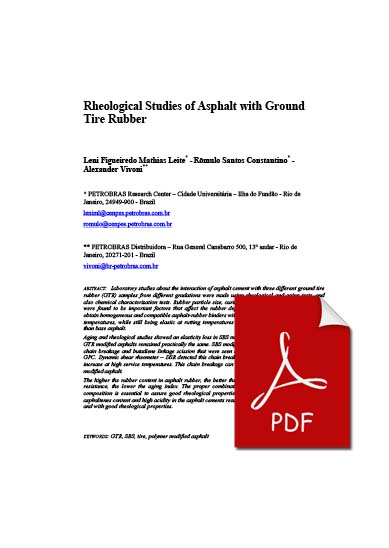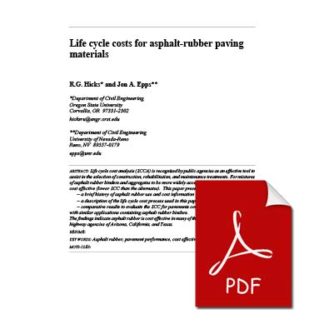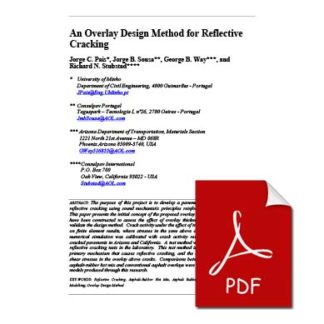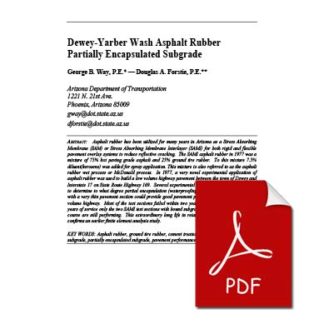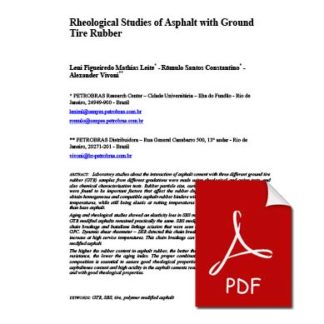Description
Laboratory studies about the interaction of asphalt cement with three different ground tire rubber (GTR) samples from different gradations were made using rheological and aging tests, and also chemical characterization tests. Rubber particle size, curing time, temperature and mixing rate were found to be important factors that affect the rubber depolymerization rate. It is possible to obtain homogeneous and compatible asphalt-rubber binders with non-detrimental viscosity at hot-mix temperatures, while still being elastic at rutting temperatures and less stiff at temperatures colder than base asphalt.
Aging and rheological studies showed an elasticity loss in SBS modified asphalts, while the elasticity of GTR modified asphalts remained practically the same. SBS modified asphalt aging resulted in polymer chain breakage and butadiene linkage scission that were seen by gel permeation chromatography – GPC. Dynamic shear rheometer – DSR detected this chain breakage after aging through phase angle increase at high service temperatures. This chain breakage can damage the rutting resistance of SBS modified asphalt.
The higher the rubber content in asphalt rubber, the better the cold stiffness properties and fatigue resistance, the lower the aging index. The proper combination of curing variables and asphalt composition is essential to assure good rheological properties. The high molecular size, the high asphaltenes content and high acidity in the asphalt cements resulted in blends more easily compatible and with good rheological properties.

